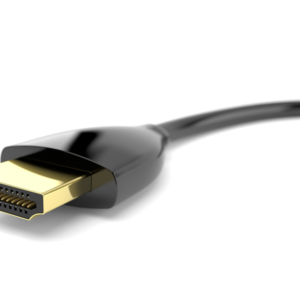Leveraging your front line workers to support clients
Like it or not, customer service is everybody’s job, and it’s everybody’s job ALL THE TIME. The opinions and attitudes that customers have regarding your company may be determined by the actions of one singular employee. You.
In 2012, GALLUP published a series of articles entitled The Silver Lining of Customer Service Problems. They found that customers who had problems, and had those problems solved through effective customer service, were the most loyal clients.
They surveyed over 13,000 companies and found that the reason for moving on from a particular vendor were driven by a few factors.
1% died
3% moved out of the area
9% left for competitive reasons (shipping costs, labor costs, etc.).
14% were dissatisfied with products or services.
68% were the result of discourteous or rude customer service.
That means that fully 82% left because customer service was lacking. They fell into that great big hole of customer service victims, and there’s no telling when or if they’ll ever come back. Every AV company claims that customer service is a hallmark, but how many actually live up to that promise? The obvious conclusion is that a company that offers truly superior customer service could really capitalize on that chasm.
That’s where you come in!
Read your company’s mission statement. Whatever words they use, and whatever order those words are in, the message is clear. Integrity. Professionalism. Quality. Reliability. These are the things each of us must carry in our toolbox every time we go to work, and these are the things that will set you apart from the competition, and increase your value to your client.
Let’s face it. Gear is gear, and most all AV companies have the same tools to work with. They can all fly a 36 ft. blend. They can all manage 49 breakout rooms simultaneously. They can all light a ballroom effectively. What’s more important than the brand of speakers you use is your team. Good people, effectively led and fairly compensated can provide superior customer service that will outshine the technical aspects of their job and put you one click above your competition. If we’re each committed to providing superior customer service, and we’re each committed to constant improvement, your company’s long-term goals will take care of themselves.
Getting better takes forever, because there is no ceiling. The best people in any field are always working to get better, even working to improve skills at which they already excel. We can ALL improve, and we ALL should. As a human, your education should never stop. If you’re not learning new things and refining your skills every day, you’re not growing, and if you’re not growing, you’re dying. If I may presume to speak for your employer, please don’t choose to die on us. We need you all, and we need your best.
There are eight Great Stone Pillars that support the umbrella known as “Superior Customer Service” Some people will tell you that there are five keys, some say seven secrets, some minimalists even claim there are just three keys and one secret. Those people are wrong, and I am right. There are no keys, there are no secrets, there are only pillars. And there are eight of them.
The first pillar is the knowledge that while Attitude is important, but unless it’s coupled with Action, attitude is little more than thoughts and prayers. Action, likewise, isn’t enough. If you’ve solved your client’s technical problem, but did so with a poor attitude, you’ve only created a new – and possibly bigger – problem for some other team member to solve. And now you’ve made that more difficult by poisoning the well. In order to provide Superior Customer Service, you’ll need to first convince your client that you’re able and eager to solve their problem, then you just have to do so.
The second pillar is to Know your Customer. This is pretty easy for us, because virtually everyone you encounter is your customer. The Meeting Planner, his or her support staff, every nervous Presenter, every performer we support, and every attendee that spent $700 to be there. They are ALL our customers and deserve (PAID FOR!) your best customer service effort. Remember that every interaction with any of these people can make or break your company’s reputation, or at the very least, make the job of everyone involved more difficult. A promise unkept, or a question unanswered can be just as detrimental as an equipment failure. Equipment problems are easy to fix. A poor first impression is not.
The third pillar is to Be a Good Listener, and it’s an acquired skill. It can take a long time to become an effective listener, but there are a few key components that can help you get there.
Eye contact s important, but don’t stare or gawk. Empathy is critical. Let your client explain. Let them vent. Listen for the clues that help you solve their problem. Ask questions if clarification is needed, but don’t interrogate and don’t accuse. Remember that whatever the issue, it’s happening to THEM and not to YOU.
“Attending” is a skill taught to counselors and salespersons that involves observing client verbal AND NON-VERBAL behaviors as one way of understanding what clients are experiencing, while displaying effective non-verbal behaviors to clients.
-Are they excited or angry? Let them vent, then explain how you’ll solve the problem. Let them know you understand the problem and that you can solve it. Once you’ve solved it, make sure you’ve communicated that, and make sure they’re comfortable with the solution.
-Are they overwhelmed? Frustrated? Then reassure them that you’re there to save the day, and then save the day. Again, make sure they’re comfortable with the solution. If you can smooth the path for someone who’s nervous about standing in front of a crowd or unsure about the material they’re about to impart, then it’s like the proverbial thorn pulled from the lion’s paw. You’ve made a friend for life, and you’ve polished your skillset as well as your company’s reputation.
-Are they disinterested? Unfriendly? Condescending? SO WHAT?? They’re your customer, and they ALL get the same superior service you and your employer promised. No exceptions.
*Remember why you wear black. You operate in the background, and things are going best when they are going quietly and we are invisible. You solve OTHER PEOPLE’S PROBLEMS, and you never want to become part of the drama or part of the problem. Effective listening (Attending) can help you avoid that by helping you to understand the nature of the problem technically, and the attitude of the person you are there to help.
The fourth pillar is to Identify and Anticipate your customer’s needs. I’m going to assume that since you got the job, you know the technical aspects of your job pretty well. But to communicate that to your client is a little more difficult than just saying, “Hey, I know the technical aspect of my job pretty well.” That’s OK though, because you’re quietly confident, and that quiet confidence will shine through, as long as you’re prepared to identify and anticipate his or her needs. You have tape, or batteries, or extra cables, or WIFI passwords because you have Identified and anticipated their needs. Anticipating problems, and being prepared when they arise does two important things. First, it shows your customer that you can see the future because you’ve seen the past. You’ve solved this problem a thousand times for a thousand other presenters, and you’re about to solve it for them. Your confidence is infectious.
Second, you’ve saved yourself some time because you were prepared, and now you have even more time to give to the next presenter and the next problem.
The ability to Make Your Customer Feel Important and Appreciated is the fifth pillar which will support your service umbrella. The best way to do this is to provide the service that your company has promised in the manner you’ve promised you’d deliver it. You don’t need to flatter, just be respectful and friendly. Look at the person you’re talking to. Remember to “smile with your voice.” But most important – SOLVE THEIR PROBLEM. Remember, this is about them and their presentation, not about you and your abilities. The successful presenter is one who can devote his time and creativity to delivering his/her message and NOT the technical aspects of getting the message out. You want your presenters thinking about the presentation and the message – not about microphones, projectors and lights.
Pillar number six is simply Understanding, and it is crucial. Not just understanding the technical aspects of the problem, but understanding the impact that problem has on the presenter’s psyche. It can be a real confidence drain when your presentation looks drastically different on site than it did back at the office. You’ve seen the horror in the eyes of a presenter whose slides appear to change between last night’s last-minute-edit/spellcheck and this morning’s “zero hour.” You’ve seen the confusion when their video doesn’t roll just like it did at home. This is good news. This is an opportunity. You’re prepared to be the hero, because you know the difference between 4:3 and 16:9. You are aware of the color differences between projected light and reflected light. You know how to get to “Presenter Mode” in PowerPoint or Acrobat. You know which presenter’s video should “Start Automatically” (novice or nervous presenter), and whose should “Start on Mouse Click (this guy is confident and has a story to tell which sets up the video). You also have some confidence that he or she can handle a well-timed mouse click. Not every presenter can be trusted with such an awesome responsibility. But you know just how to make either happen, because you understand the “technical” side of the equation, and the “people” side too. You got this!
The seventh pillar is Know How to Apologize. Apologies should be rare, but they’re unavoidable. Eventually, no matter how good your service is, something will fail. Something will break. Some file will be corrupted, and somebody will be upset. Sometimes that means restarting a laptop, forgoing (or postponing) a video, or replacing a broken component. When this happens, their whole rhythm has been thrown off. Their groove has been busted. Their chill has been warmed. Obviously, your first priority is to solve the immediate problem and get the presentation/session back on track. By entering the room wearing your black shirt, you have automatically and immediately taken ownership of the failure. Whether it’s your fault, the presenter’s fault or nobody’s fault, it’s your problem now. In apologizing for the interruption caused by whatever failed, you’re not admitting fault, you’re simply declaring your empathy. You care. Tell them you care. Don’t get in the way or add to the delay by apologizing with a poem or a paragraph, but let them know you’re sorry it happened and you’ve done whatever you can to solve the problem. Then. Get out of the way and let the magic happen…
The last of our pillars is Give More Than Expected. This is what will set you apart from all the other guys who can also do a blend, manage a bunch of breakouts or provide digital signage. Try to discover what each customer defines as value. For some, it’s about walk-in music. For others, it’s about room lighting. Some people need a little extra help navigating PowerPoint or Zoom, or DropBox, or GoToMeeting. Now it’s not your job to teach every presenter the intricacies of Keynote, but if you know something that would obviously help, share it. That’s called “Value Added”, and it’s another of the things they get when they hire your company for which there is no line item.
Here’s an exercise: Show the next five presenters you assist what the letter “B” does in PowerPoint. I guarantee that at least three will be surprised and delighted by this little gem you impart. I further guarantee that only one of them will actually USE that command in the next five years. But they’ll appreciate knowing, even if only to validate their own perception of themselves as “Presenter”, and they will remember who taught them. OK, they may not remember YOU, but they’ll remember it was a tech in a black shirt. And THAT, my friends is what VALUE ADDED is all about.
SIDEBAR
Good customer service is more art than science. You can memorize all the words in all the books about it (and there are thousands!), but you won’t be effective unless you make the conscious decision to do so. You don’t need to be charming, just capable, calm and caring.
Little things like:
First impressions – It’s true, first impressions last. Do you look professional and competent? Are you easily identifiable, or are you just some guy in a black shirt? Wear your ID badge. If the conference provides one, wear it prominently.
Positive state of mind – If you’re cheerful, confident and prepared you’re half way home. Remember, god customer service is a state of mind, and your customer will sense if your heart’s not in it.
Body language – Eye contact, facial expressions, how you walk and talk, what you do with your hands and feet while you talk or listen, all these things and more comprise body language. You don’t have to be an expert, just be self-aware. Don’t cross your arms, don’t roll your eyes, don’t point at whomever you’re speaking with, don’t burp or yawn. Your mom already gave you these things, you just have to bring them to work. EVERY DAY.
How you use your voice – Do you speak too quickly because you’re in a hurry? Do you mumble because you’re tired, confused, or disappointed in your favorite sports team? Do you sound bored, or bossy, or weak? Customers pick up on the littlest things…
Friendly but not too informal – You want to appear friendly and helpful, but also professional and official. Remember, this is your customer who PAYS THE BILLS! Your goal is to make sure THEY accomplish THEIR goals. Start by identifying yourself – “Hi, I’m Ernie, your AV Tech! Can I help you get started?” If they want a conversation, they’ll make that clear. If they don’t make it CRYSTAL CLEAR that they want to have an extended conversation with you 90 seconds before their scheduled to begin what just might be The Most Important Presentation of Their Life, then don’t start one Get in, get them set, and get out.
Calm confidence – You know why you’re there. You know what has to happen. Make it happen efficiently and without a lot of fanfare. Your confidence will help the presenter feel more confident about one facet of the challenge they face. Remember that each presenter is a Content Expert in their field, whether it’s Sociology or Bus Transportation. A lot is expected of them in the next ten or thirty minutes, and your only role is to facilitate that. If YOU are calm, confident, capable and caring, that will help the presenter to appear so too.
Follow through – This is an easy one. All you have to do is DO WHAT YOU SAY YOU WILL DO! If for some reason that’s not possible – maybe the Meeting Planner isn’t willing to pay for six more wireless microphones – then communicate that to the requestor with an explanation and, wherever possible, an alternate solution. Just don’t leave anybody hanging. If you know your job and you follow these steps, you’re on the right path.









